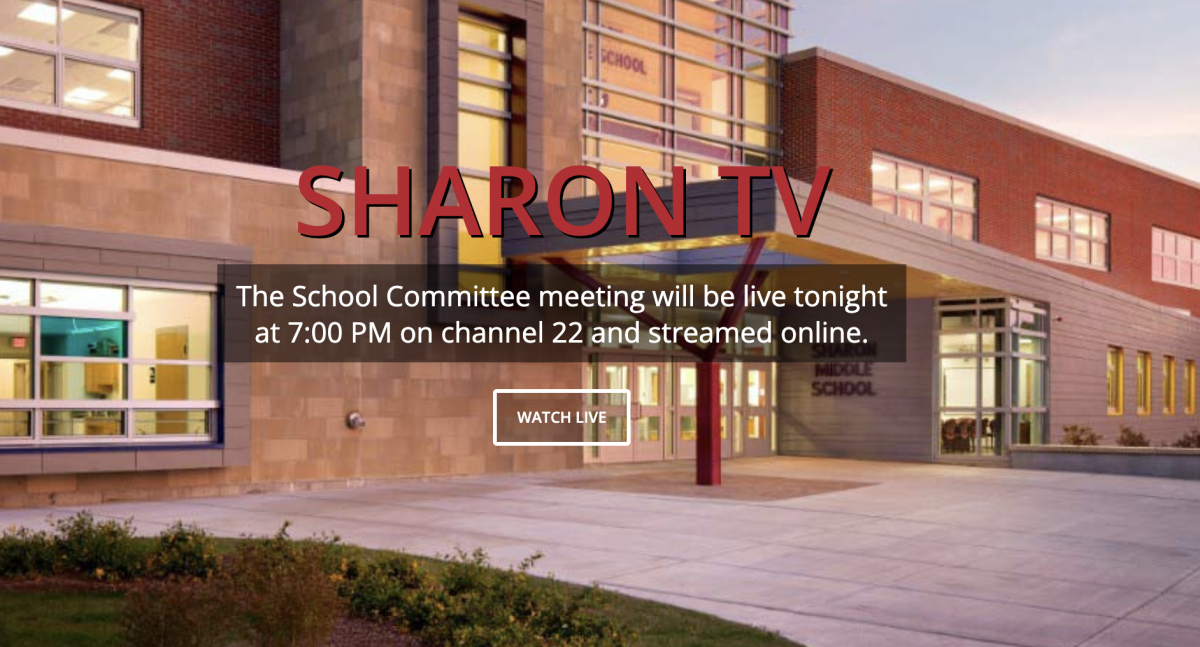Sharon High seniors enrolled in Honors Advanced Print & Digital Journalism are covering School Committee meetings. The following news story reports on proposed budget figures presented at the Dec. 11 meeting, which can be watched online on Sharon TV. The School Committee will meet tonight (Feb. 12), and the public is invited to provide feedback on next year’s budget.
By Jacob Katz and Rachel Zaretsky, Class of 2025
Tonight, the Sharon School Committee will conduct a public hearing on the budget for the next fiscal year.
Superintendent Dr. Peter Botelho initiated this process two months ago by presenting his proposed budget to the School Committee for the 2025–2026 school year at the Dec. 11 meeting.
According to the priorities committee, responsible for allocating money for the schools, $55,524,557 is the amount we are working with. This amount represents about a 2.7% increase from last year’s budget but is still $1,459,787 less than the 2026 level-based budget. (A level-based budget includes all funds from the previous year and is then adjusted to add or remove money as needed.) Thus, the budget for FY 2026 is going to be strained yet again, and there is not enough money for the schools to run as smoothly as they possibly could.
To compensate for the lack of funds in some areas, cuts are an inevitable occurrence. District-wide, a number of positions have been proposed to be cut, and the dynamics of the Sharon Schools may shift.
In terms of teachers, some positions are in jeopardy. The high school is facing possible cuts, with Spanish, English Language Arts, science, math, and visual arts teachers proposed to be removed. Notably, for science, the superintendent explained that the science cut would potentially put the AP science courses and electives at risk of being reduced or not running. If the visual arts teacher is cut, digital photography and animation courses are at risk of reduction or elimination. These particular courses are popular among SHS students and could cause uproar later on.
In addition, four elementary teaching positions are at risk, which could increase class sizes significantly—up to 25 students per class in lower elementary grades and up to 27 students in upper elementary grades. An elementary library and art class are also at risk of cuts, along with the instrumental music program potentially becoming an after-school, fee-based option.
The middle school will also be affected. Four teachers are at risk as well, increasing class sizes similar to the elementary schools.
These particular ideas for cuts were part of Dr. Botelho’s initial plan, intended to spark the conversation about the upcoming budget for FY 2026. None of these changes are official.
In his presentation before the School Committee in December, Dr. Botelho outlined the schools’ top priorities for 2026 and revealed the level-based budget. Some expenses must be accounted for in the level-based budget, including $2.3 million for contract obligations (teachers/unions), which make up a substantial 4.35% of the predicted 5.48% increase. Additionally, $216,000 for special education transportation, $142,000 for yellow bus services, $94,000 for special education OSD increases, $80,000 for utilities, and $75,000 for athletics are all mandatory expenses.
However, these numbers do not include the schools’ priority positions, which are to be added for the next school year: an elementary special education administrator ($105,000), a high school assistant principal ($110,000), and clerical support for special education ($42,000). Combined, these bring the total proposed increase to 5.95%.
The bulk of the increases outside contractual obligations will focus on special education, which accounts for 52.8% of the budget growth. The remainder will cover utilities, sports, transportation, and the assistant principal role.
However, outside of the potential addition of this assistant principal, the general student body will see minimal direct benefit from the proposed budget.
Dr. Botelho acknowledged that these allocations only address the district’s most pressing priorities. In a stronger budget year, the district could have tackled additional unmet needs, such as hiring more special education teachers, Math and English language arts specialists, a social studies teacher, and a technology support specialist.
Superintendent Botelho also proposed a 15% increase in athletic fees and transportation fees.
Botelho also said that the ECC (Early Childhood Center) could increase its tuition by 9% and its enrollment (adding a new classroom), raising $30,000 and $80,000, respectively. Instituting fees for students participating in high school clubs would raise an additional $25,000. Additionally, restructuring the administration district-wide would enable $160,000 in savings.
Cover photo from Sharon TV.

